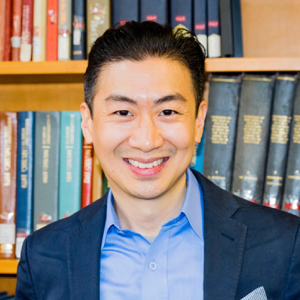
Dr. Norman Eng is an adjunct assistant professor in the childhood education department of the City College of New York (CCNY) and Brooklyn College (CUNY). He teaches child development, a student teaching seminar, and math methodology and is the best-selling author of Teaching College: The Ultimate Guide to Lecturing, Presenting, and Engaging Students (2017). Formerly, Norman was a marketing executive, experience that has proven useful in understanding his “customers” today—students.
Norman earned his ACUE credential at CCNY in spring 2017 and found that the program enhanced his pedagogy—both in teaching education classes and in his writing about teaching—which he explains in this week’s Faculty Spotlight.
Making the abstract concrete
In my child development course, I teach concepts like the zone of proximal development (ZPD), which is the difference between what learners can do without help and what they can’t do. It’s an abstract idea, and ACUE’s approach comes in handy for teaching it. The ACUE course recommends teaching new concepts in three phases: concept exploration, concept introduction, and concept application. The course helped me figure out how to get students to explore the abstract concept of ZPD more concretely. For instance, I’ll ask, “How did you learn how to ride a bicycle?” In the discussions that follow, students talk about using training wheels, having their parent keep the bike steady as they pedal, and so on. At that point, I relate training wheels to the temporary supports that teachers provide students, such as an essay template. Students use a template to write their essays until they don’t need it anymore—much as they use training wheels until they can balance on their own. ZPD is the area where teachers provide these temporary supports.
I find the key to making concept exploration work is to omit any mention of abstract concepts, like ZPD, until later in the lesson. When students have activated prior knowledge and experiences—like using training wheels—they can contextualize the concept. Concepts stick better when they are anchored to something familiar. That’s when I lecture about ZPD (i.e., the “concept introduction” phase).
Revisiting the syllabus
The ACUE course encourages making syllabi more engaging and relevant, something I’ve put a lot of work into for my courses. For example, I focus on one main question that drives my child development course—the question that permeates every lecture: How do you help children develop into successful adults? Students know exactly what they are getting out of this course, and that aligns with their larger goal to become certified teachers. I’ve also simplified the language to make my syllabus more reader-friendly, and, where possible, I’ve replaced text with visuals, such as using a graphic icon of a smartphone in place of the words “cell phone policy.”
Having an impact
As academics, a lot of what we write is obscure. Before I took ACUE’s course, I wrote a general-interest book to help new college instructors teach complex subjects, and I think readers found it helpful. I was also working on a video series based on the book. But then I took the course and experienced an a-ha! moment during the module that discussed concept exploration. What if, in teaching a new topic, we turn it from a phrase into a question? The next edition of the book will reflect this discovery. The video series already does.
If we want to make an impact on our students, perhaps what we do outside of journal publications should count for just as much. Teaching is not just about pedagogy or research and scholarship. It’s also about pursuing our passions. I encourage my colleagues to share their expertise beyond academia—write the book you want to write, start a blog that means something to you. This can be immensely gratifying—and can make for great classroom discussions.
To learn more about Norman, visit his website, normaneng.org, and follow him on Twitter: @EngNorman.
